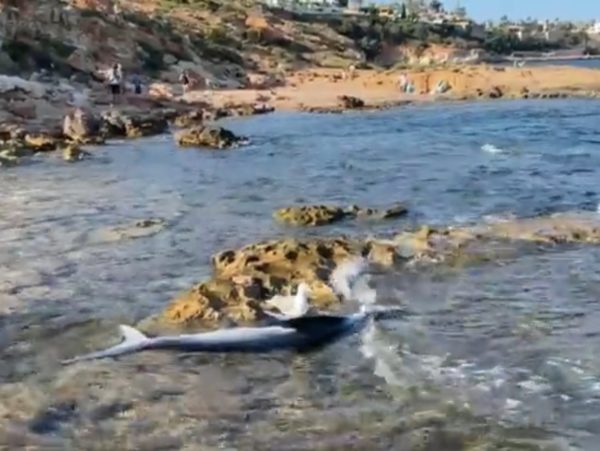A woman received treatment after suffering an anxiety attack on Aguamarina beach on Thursday after she was alerted to a two-metre long shark, just a few metres from where she was swimming. Fortunately, that was as close as we got to any real drama, although several bathers were also forced to make a speedy exit from the water.
The alarm was quickly raised by a lifeguard at around 10am after he saw the excitement unfolding, with the shark swimming around in circles close the beach itself. The lifeguards whistled to the bathers to get out of the water, although it is understood that they needed little encouragement to do so.

Coincidentally, however, Thursday was also the day that the lifeguard service began on the Oriolan beaches.
The lifeguards reported the matter to the Local Police, although after a few minutes the shark had moved out beyond the beach and into deeper water. The flag remained at green with bathers back in the sea just five minutes later.
But a happy ending there was not as we learned later in the day that, what we understand to be the same shark, had become stranded on the rocks at La Caleta beach, in Cabo Roig. This was reported by the MeteOrihuela Twitter account, which also published a video in which the shark could be seen perishing among the rocks near the shore, where it finally died.

According to scientific studies, the increase in sea temperatures due to climate change is now affecting all species, even large predators, and may alter the patterns and migratory routes of sharks.
From it’s appearance, it would appear to have been a blue shark, a species of the Mediterranean shark family. The biologist Juan Antonio Pujol explained that the specimen, due to its behaviour, appeared to have some kind of problem. Like many of them that come close to the coast, it may have suffered from an interaction with another marine animal, been caught by a hook and released or suffered from a marine disease.
He also said that every summer there are specimens of blue sharks that tend to come close to the coast, either because of these problems or they wash up already dead. Pujol added that it is not a dangerous animal. Its diet is focused on fish, and “it is very rare that it attacks people, much less in situations where it has problems or is suffering from an illness.”
He said that, “finding a specimen of these characteristics on the shore if you are bathing is scary, but you have to remain calm, because they are not aggressive.”





